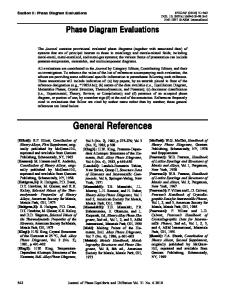Fluctuations and the QCD phase diagram
- PDF / 502,901 Bytes
- 3 Pages / 612 x 792 pts (letter) Page_size
- 53 Downloads / 282 Views
ELEMENTARY PARTICLES AND FIELDS Theory
Fluctuations and the QCD Phase Diagram* B.-J. Schaefer** Institut fur ¨ Physik, Karl-Franzens-Universitat ¨ Graz, Austria Received March 31, 2011
Abstract—In this contribution the role of quantum fluctuations for the QCD phase diagram is discussed. This concerns in particular the importance of the matter back-reaction to the gluonic sector. The impact of these fluctuations on the location of the confinement/deconfinement and the chiral transition lines as well as their interrelation are investigated. Consequences of our findings for the size of a possible quarkyonic phase and location of a critical endpoint in the phase diagram are drawn. DOI: 10.1134/S1063778812060270
1. INTRODUCTION Driven by running high-energy heavy-ion collision experiments at LHC, RHIC, and SPS and upcoming heavy-ion facilities such as FAIR, NICA, and J-PARC there is a strong interest to gain a deeper understanding of the properties of QCD matter under extreme conditions. The general chiral and deconfining phase structure and in particular the possible existence of a critical endpoint (CEP) in the QCD phase diagram are much under debate, see, e.g., [1]. Analyzing the relevant temperature and density region in the phase diagram is clearly a non-perturbative task and suitable methods have to be applied, e.g., [2]. For vanishing chemical potential, lattice QCD is a suitable non-perturbative technique to provide reliable insights in the QCD finite temperature transition but fails at larger densities due to the notorious fermion sign problem at non-vanishing chemical potential. Recently, impressive progress has been achieved in the framework of QCD-motivated Polyakov-loop extended chiral models such as the Polyakov–Nambu–Jona-Lasinio (PNJL) [3] and the Polyakov-quark–meson (PQM) [4–6] models. In these models information about the confining glue sector of QCD is included in form of an effective Polyakov-loop potential in the spirit of a Landau– Ginzburg approach together with a coupling of the Polyakov loop to the quarks. The parameters of the Polyakov-loop potential are extracted from pure Yang–Mills lattice simulations at vanishing densities. Such models have often been investigated in mean-field approximations but the matter sector ∗ **
The text was submitted by the author in English. E-mail: [email protected]
of these models has also been studied in detail beyond the mean-field level by taking into account the quark–meson quantum fluctuations mostly in a functional renormalization group (FRG) approach, see, e.g., [7]. In this context, the quantum back-reaction of the matter sector to the gluonic sector in these Polyakov-loop extended models has been omitted. The Polyakov-loop potential has a parameter T0 that is adjusted to the, for Nc = 3, first-order deconfinement transition temperature of Tc = 270 MeV in the pure gauge theory where no dynamical quarks are present. In [5] the quantum back-reaction has been taken into account and acquires in the presence of dynamical quarks a quark flavor and quark ch
Data Loading...











